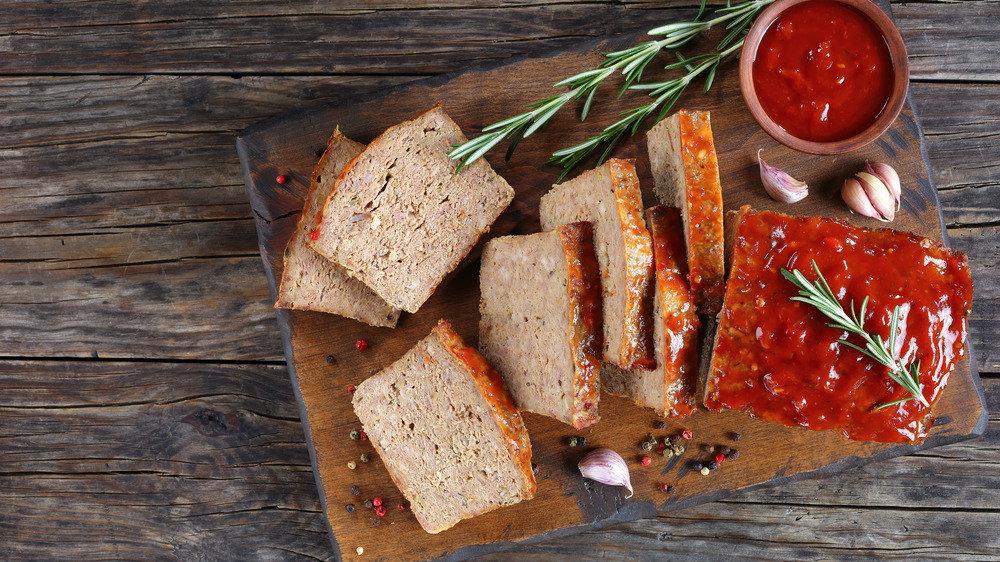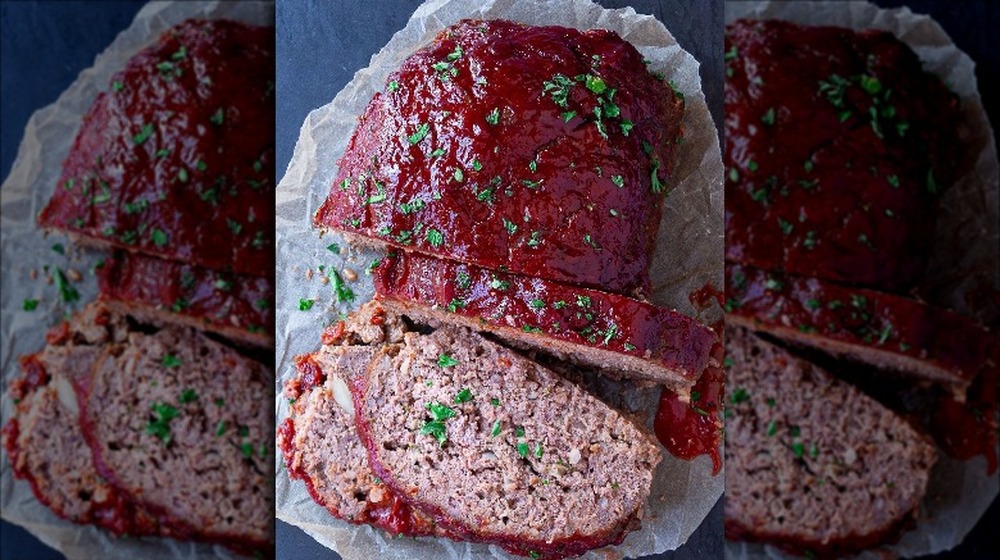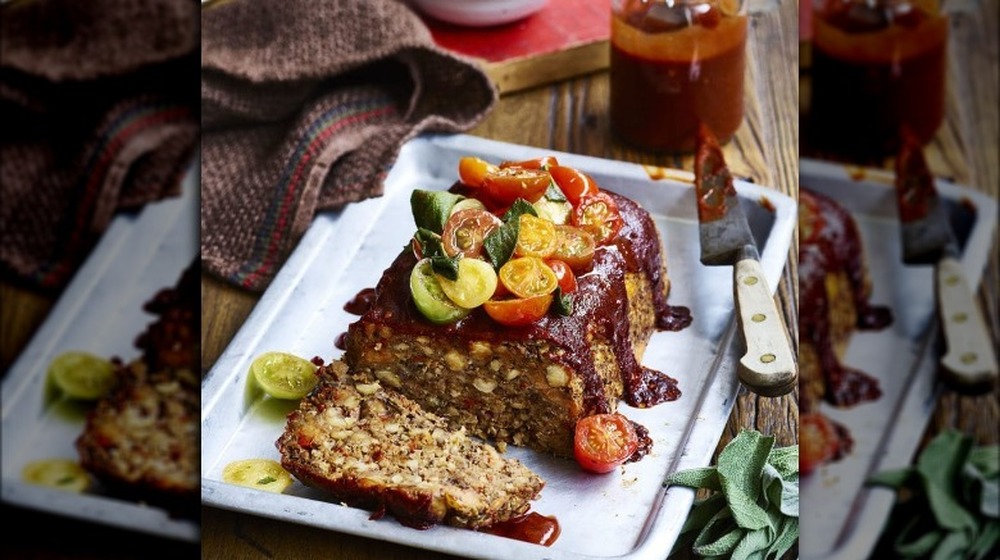Don't Make These Common Meatloaf Mistakes
Meatloaf looks deceptively easy to make. Here's what it looks like to someone who's never made it before: Take some ground beef. Take some vegetables, such as celery and onion. Take some breadcrumbs. Mix together, form into a loaf shape, put some ketchup on top, and pop it into the oven. What could go wrong?
A lot of things can go wrong, especially if you think meatloaf is something that really can't be messed up. While the above recipe does kind of give a rough outline of how to make a meatloaf, the devil is in the details, as they say. Let's consider each of the steps in meatloaf-making, from beginning to end, to make sure you don't make any mistakes your mouth will regret.
First step: Preheating the oven. You might default to 350 degrees Fahrenheit or see recipes that tell you to turn the oven higher than that. But Alton Brown, a chef famous for his precise approach to cooking, says to set the oven to 325 degrees for meatloaf. The cooking time will be longer, but you risk drying your meatloaf out if you go any higher (via The Spruce Eats).
Up next: the ground beef. Making meatloaf is not the occasion to be health conscious. Don't use turkey meat or lean beef. Eat This, Not That! says you should to use 80/20 ground beef, which means 80 percent lean and 20 percent fat. This will boost flavor and, again, help prevent dryness.
Soak your breadcrumbs first, and don't overmix
Dryness happens to be the number one mistake to avoid when making meatloaf. So let's look at what you're going to mix into your ground beef: the breadcrumbs and the veggies. Use store-brought breadcrumbs, or, if you most do homemade, use stale bread or toast the bread so it doesn't absorb moisture from the meat. Soak the breadcrumbs in milk first. The liquid helps with the meatloaf's texture and tenderness. You might add an egg to your breadcrumbs, too, to prevent your loaf from crumbling.
You can't really go wrong with your vegetable selection. Put in whatever appeals to you — bell peppers, carrots, onions, squash, you name it. Just don't put them in raw; be sure to sauté them first. This will deliver more flavor and juiciness to your meatloaf. Add spices, maybe garlic powder or paprika, so your loaf isn't bland.
When it comes to mixing your ingredients together, there is such a thing as doing the job too well. Don't overmix — do it just enough to blend the ingredients together. Overmixing and compressing the meat will make the final product tougher. And that glaze you put on top doesn't have to be just ketchup. Eat This, Not That! suggests a mix of ketchup, mustard, and brown sugar. Whatever you decide to put on top of your meatloaf, do put something on top. Once again, this will help retain moisture.
Here's how to add pizzazz to your meatloaf
Now you have your properly made raw meatloaf going inside a 325-degree oven. Stick a thermometer in it to make sure it gets to proper doneness, 155 or 160 degrees. Once you hit that mark, take the meatloaf out of the oven. You still have one more chance to make a mistake, so don't stop reading just yet. Remember it this way: Your meatloaf has to loaf, just for a little bit, after it's done. Let it rest for 15 minutes before you cut it, or else you'll lose those precious juices yet again.
That was meatloaf 101. We would need to taste your creation to see whether you passed the class, but if you think you're ready for the next level, then what follows are suggestions for getting creative. Here's how to give your meatloaf an X factor, with a nod to Taste of Home.
If you like it hot, add buffalo sauce to your mix or use it in your glaze. You can give your meatloaf some regional flair, too. Make Italian meatloaf by adding marinara, basil, and oregano. Or add salsa, beans, and taco seasoning for a Tex-Mex meatloaf. Don't worry, nobody's going to accuse you of cultural appropriation. It's not like you're going to open a new restaurant around the concept or anything. (We're looking at you, Gordon Ramsay.)


